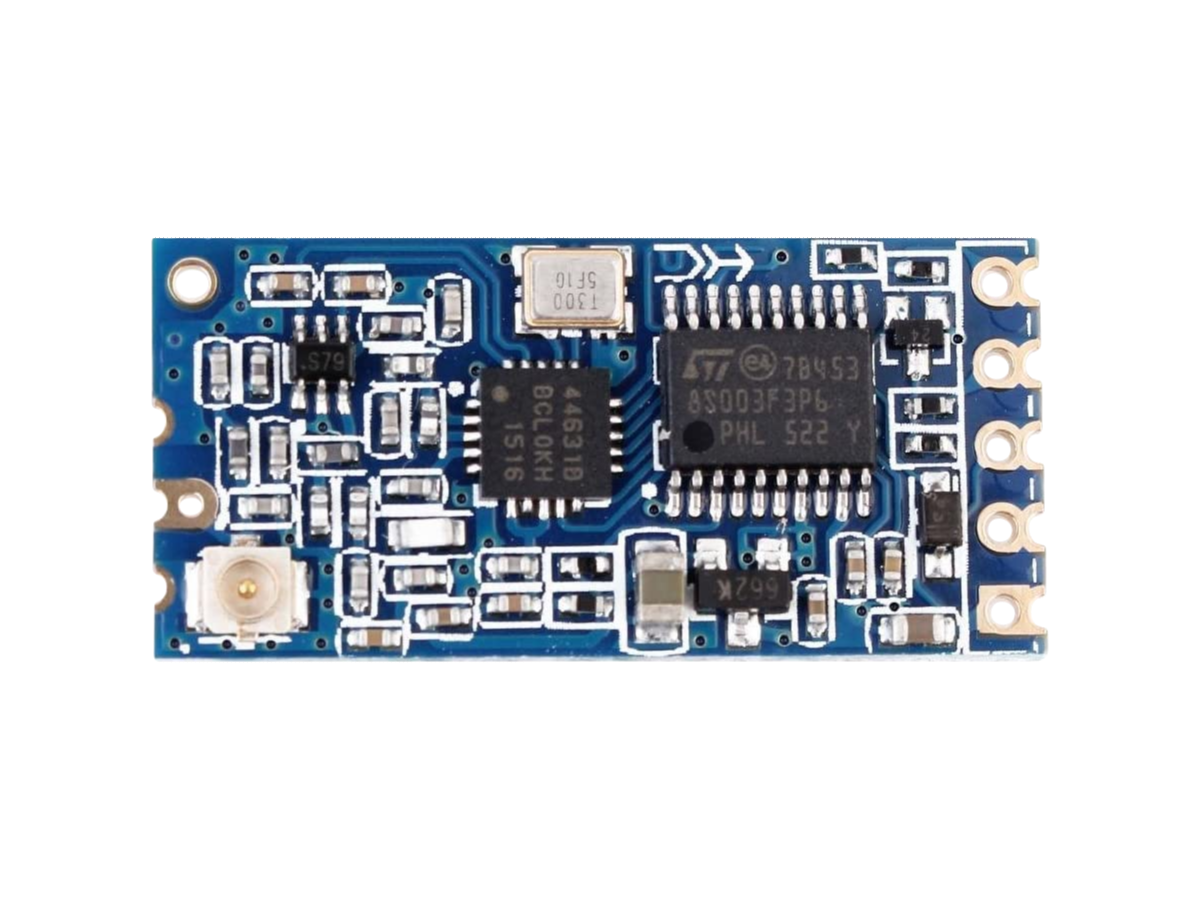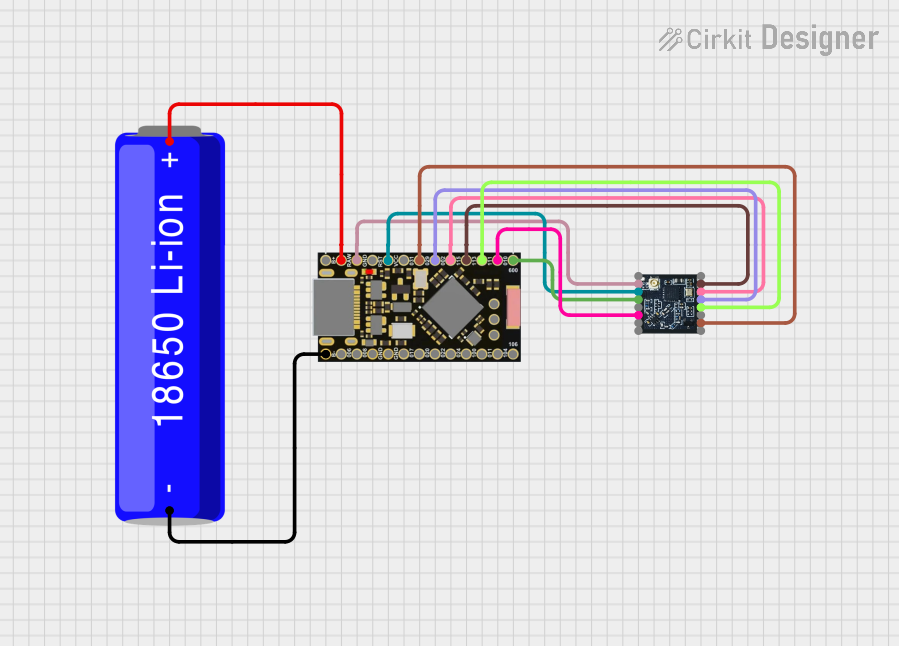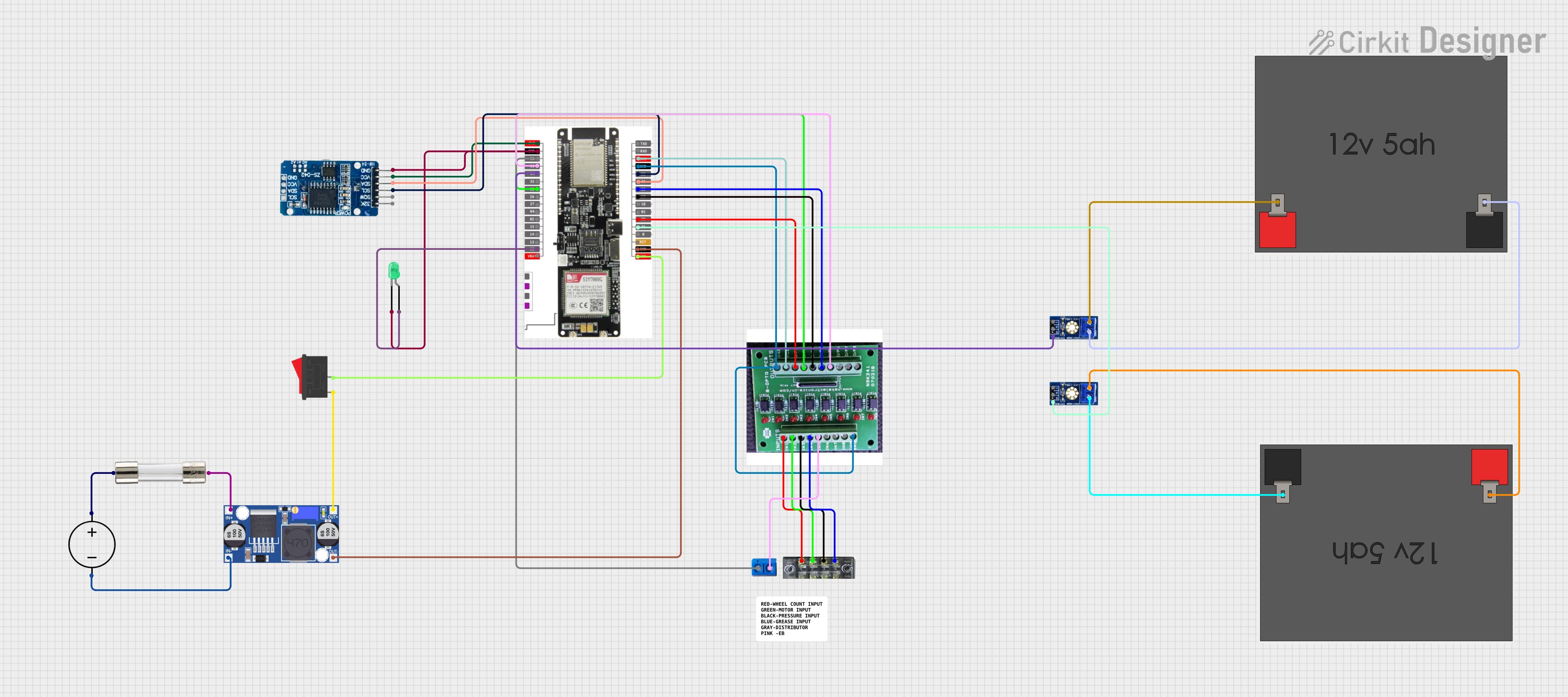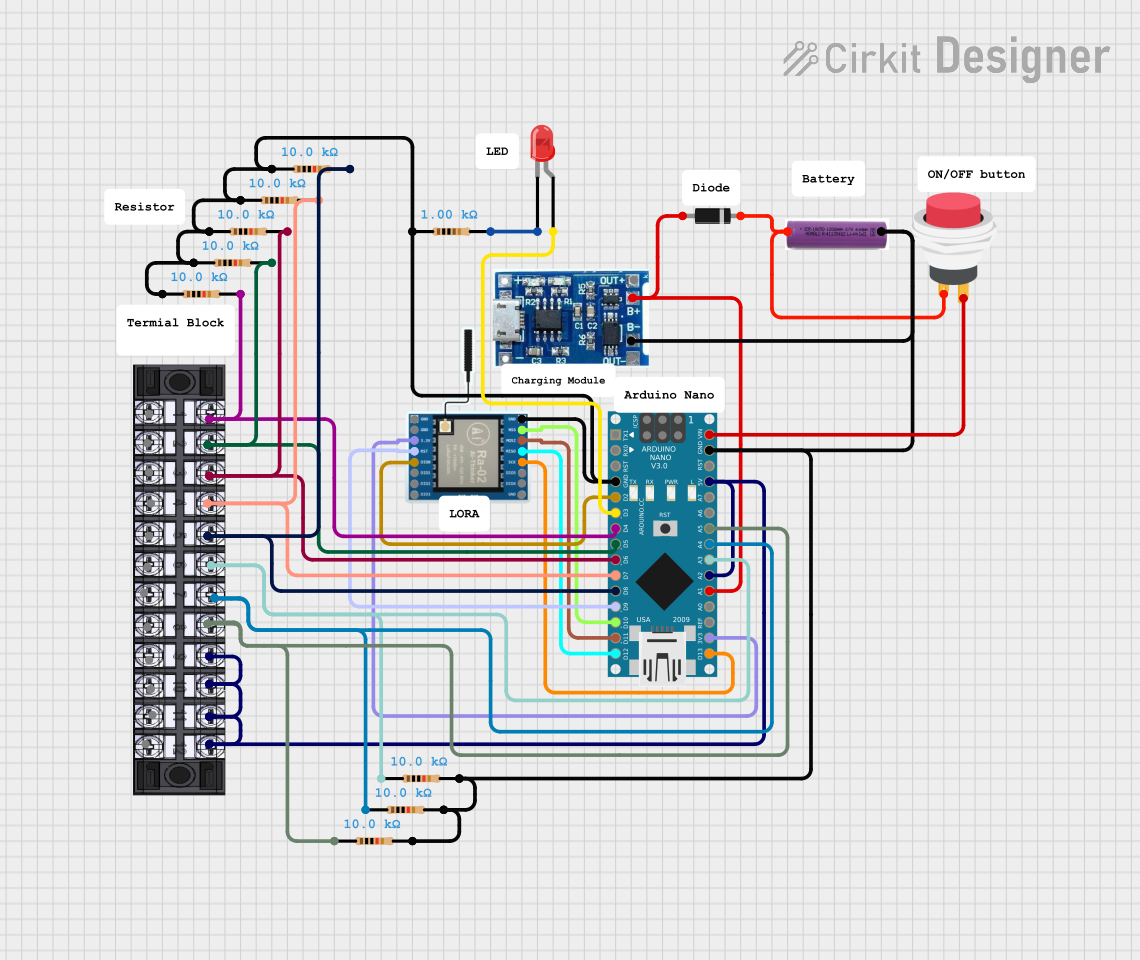
How to Use HC-12 Wireless Serial Module: Examples, Pinouts, and Specs

 Design with HC-12 Wireless Serial Module in Cirkit Designer
Design with HC-12 Wireless Serial Module in Cirkit DesignerIntroduction
The HC-12 Wireless Serial Module, manufactured by Evelta, is a versatile wireless communication module designed for serial data transmission. Operating in the 433 MHz frequency range, it supports communication over distances of up to 1,000 meters in open space. The module is highly configurable, offering multiple communication modes to suit various applications. Its compact size and ease of use make it a popular choice for remote control, telemetry, and wireless data transfer projects.
Explore Projects Built with HC-12 Wireless Serial Module

 Open Project in Cirkit Designer
Open Project in Cirkit Designer
 Open Project in Cirkit Designer
Open Project in Cirkit Designer
 Open Project in Cirkit Designer
Open Project in Cirkit Designer
 Open Project in Cirkit Designer
Open Project in Cirkit DesignerExplore Projects Built with HC-12 Wireless Serial Module

 Open Project in Cirkit Designer
Open Project in Cirkit Designer
 Open Project in Cirkit Designer
Open Project in Cirkit Designer
 Open Project in Cirkit Designer
Open Project in Cirkit Designer
 Open Project in Cirkit Designer
Open Project in Cirkit DesignerCommon Applications and Use Cases
- Remote control systems (e.g., drones, robots)
- Telemetry and sensor data transmission
- Home automation and IoT devices
- Wireless serial communication between microcontrollers
- Industrial monitoring and control systems
Technical Specifications
The HC-12 module is designed to provide reliable and efficient wireless communication. Below are its key technical details:
| Parameter | Specification |
|---|---|
| Operating Frequency | 433.4 MHz to 473.0 MHz |
| Communication Distance | Up to 1,000 meters (open space) |
| Modulation Method | GFSK (Gaussian Frequency Shift Keying) |
| Operating Voltage | 3.2V to 5.5V |
| Operating Current | 16 mA (transmitting), 3.5 mA (receiving) |
| Baud Rate | 1,200 bps to 115,200 bps |
| Communication Modes | FU1, FU2, FU3, FU4 |
| Dimensions | 27.8 mm x 14.4 mm x 4 mm |
| Operating Temperature | -40°C to +85°C |
Pin Configuration and Descriptions
The HC-12 module has a total of 4 pins. Below is the pinout and description:
| Pin | Name | Description |
|---|---|---|
| 1 | VCC | Power supply input (3.2V to 5.5V). Connect to the 5V or 3.3V pin of your microcontroller. |
| 2 | GND | Ground. Connect to the ground of your circuit. |
| 3 | TXD | Transmit data pin. Connect to the RX pin of your microcontroller. |
| 4 | RXD | Receive data pin. Connect to the TX pin of your microcontroller. |
Usage Instructions
The HC-12 module is straightforward to use and can be easily integrated into a circuit for wireless communication. Below are the steps and best practices for using the module:
Connecting the HC-12 to a Microcontroller
- Power Supply: Connect the VCC pin to a 3.3V or 5V power source and the GND pin to the ground.
- Serial Communication: Connect the TXD pin of the HC-12 to the RX pin of your microcontroller, and the RXD pin of the HC-12 to the TX pin of your microcontroller.
- Antenna: Attach an appropriate 433 MHz antenna to the module for optimal range and performance.
Configuring the HC-12
The HC-12 module can be configured using AT commands sent via a serial interface. To enter AT command mode:
- Pull the "SET" pin (not listed in the basic pinout above) low before powering the module.
- Use a serial terminal or microcontroller to send AT commands.
Example AT commands:
AT: Test the module's response.AT+BAUDx: Set the baud rate (replacexwith the desired value, e.g.,AT+BAUD4for 9600 bps).AT+RFx: Set the communication channel (replacexwith a value from 1 to 100).
Example: Using HC-12 with Arduino UNO
Below is an example of how to use the HC-12 module with an Arduino UNO for basic wireless communication:
#include <SoftwareSerial.h>
// Define RX and TX pins for HC-12
SoftwareSerial HC12(10, 11); // RX = Pin 10, TX = Pin 11
void setup() {
Serial.begin(9600); // Start serial communication with PC
HC12.begin(9600); // Start serial communication with HC-12
Serial.println("HC-12 Ready");
}
void loop() {
// Check if data is received from the HC-12 module
if (HC12.available()) {
String receivedData = HC12.readString();
Serial.print("Received: ");
Serial.println(receivedData); // Print received data to Serial Monitor
}
// Check if data is sent from the Serial Monitor
if (Serial.available()) {
String sendData = Serial.readString();
HC12.print(sendData); // Send data to HC-12 module
}
}
Best Practices
- Use a decoupling capacitor (e.g., 10 µF) across the VCC and GND pins to stabilize the power supply.
- Ensure the antenna is securely connected for maximum range.
- Avoid placing the module near high-frequency noise sources to prevent interference.
Troubleshooting and FAQs
Common Issues and Solutions
No Communication Between Modules
- Ensure both modules are configured to the same baud rate and communication mode.
- Verify the TX and RX connections are correct.
Short Communication Range
- Check the antenna connection and ensure it is suitable for 433 MHz.
- Avoid obstructions and interference sources in the communication path.
Module Not Responding to AT Commands
- Ensure the "SET" pin is pulled low before powering the module.
- Verify the baud rate of the serial terminal matches the module's default baud rate (9600 bps).
Data Loss or Corruption
- Use a lower baud rate for long-distance communication to improve reliability.
- Ensure a stable power supply to the module.
FAQs
Q: Can the HC-12 module communicate with other 433 MHz devices?
A: The HC-12 is designed to communicate with other HC-12 modules. It may not be compatible with other 433 MHz devices unless they use the same protocol and settings.
Q: How do I reset the HC-12 to factory settings?
A: Send the AT+DEFAULT command in AT mode to reset the module to its default configuration.
Q: What is the default baud rate of the HC-12?
A: The default baud rate is 9600 bps.
Q: Can I use the HC-12 with a 3.3V microcontroller?
A: Yes, the HC-12 supports an operating voltage range of 3.2V to 5.5V, making it compatible with both 3.3V and 5V systems.